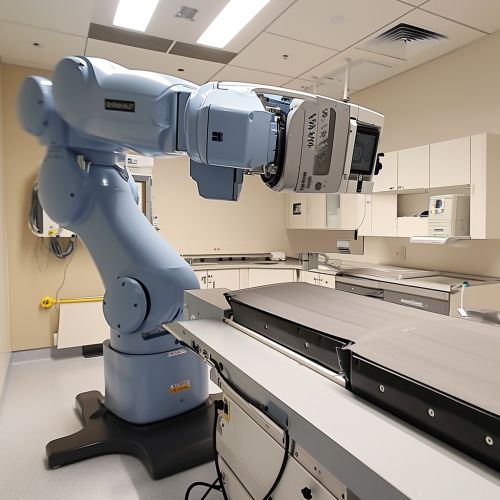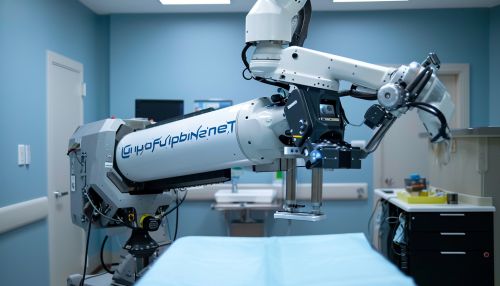Cyberknife
Introduction
The CyberKnife is a frameless robotic radiosurgery system used for treating benign tumors, malignant tumors, and other medical conditions. The system was invented by John R. Adler, a professor of neurosurgery and radiation oncology at Stanford University.
History
The development of the CyberKnife system began in 1987. The system was named for its surgical precision. Unlike traditional stereotactic surgery, which requires a frame to be secured to the patient's skull for surgical targeting, the CyberKnife system uses a combination of image guidance and computer controlled robotics to deliver radiation to the target area. The first CyberKnife system was installed at Stanford University Medical Center in 1991 and was cleared by the FDA for clinical investigation in 1994.
System Components
The CyberKnife system consists of a compact linear accelerator, which generates high-energy radiation, mounted on a robotic arm. The system uses a combination of imaging and tracking technology to maintain accurate targeting. The system's image guidance software allows the system to track and adjust for patient movement during treatment.
Treatment Process
The CyberKnife treatment process begins with the acquisition of image data, which is used to determine the size, shape, and location of the tumor. The image data is then used to create a treatment plan. The treatment plan specifies the number and intensity of radiation beams to be delivered, as well as their paths through the body. During treatment, the patient lies on a treatment table while the robotic arm moves around them, delivering radiation according to the treatment plan.
Clinical Applications
The CyberKnife system is used to treat a variety of conditions, including brain tumors, spinal tumors, lung tumors, liver tumors, and prostate cancer. The system is also used to treat functional disorders such as trigeminal neuralgia and arteriovenous malformations.
Advantages and Limitations
The CyberKnife system offers several advantages over traditional radiation therapy. The system's ability to track and adjust for patient movement allows for more accurate targeting of radiation, which can reduce damage to surrounding healthy tissue. However, the system also has some limitations. The treatment process can be time-consuming, and the system is not suitable for treating all types of tumors.
Future Developments
Research is ongoing to expand the clinical applications of the CyberKnife system. Future developments may include the use of the system for treating conditions such as cardiac arrhythmias and epilepsy.
See Also


